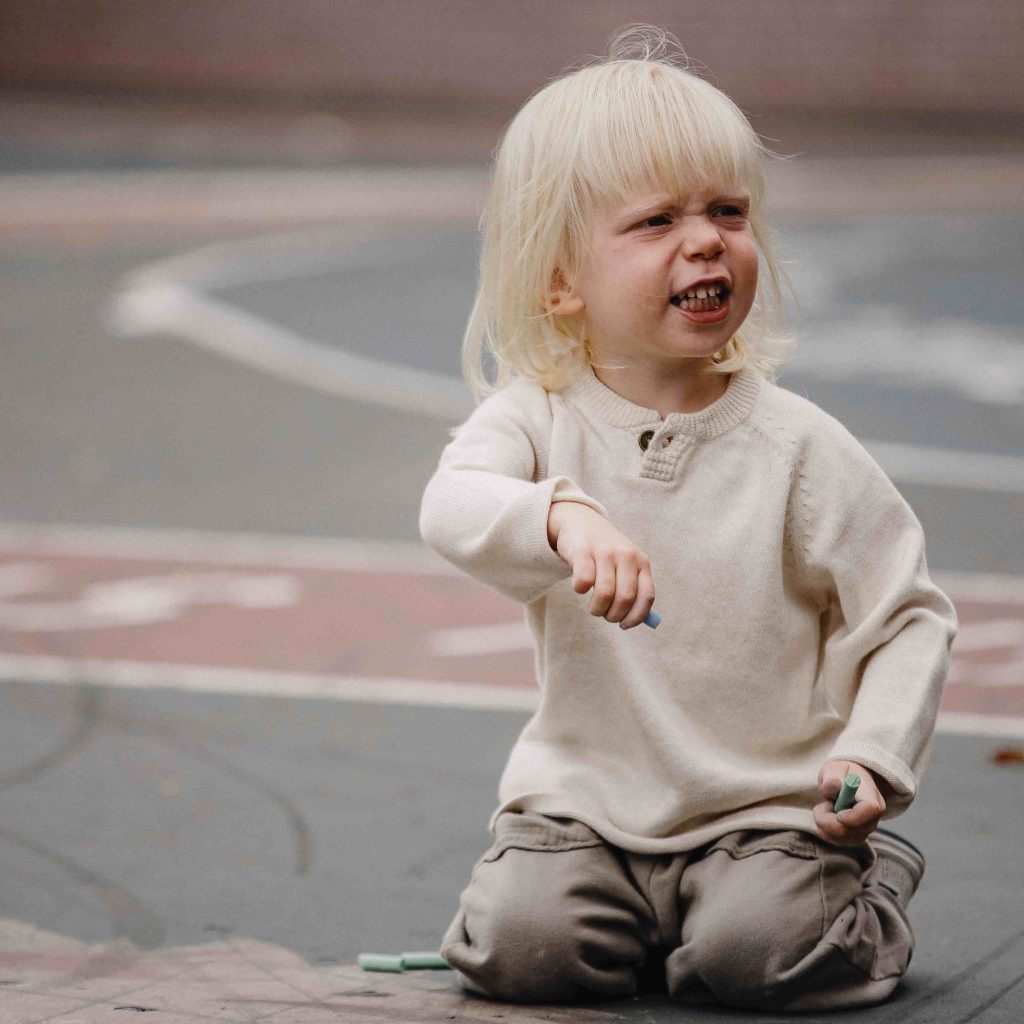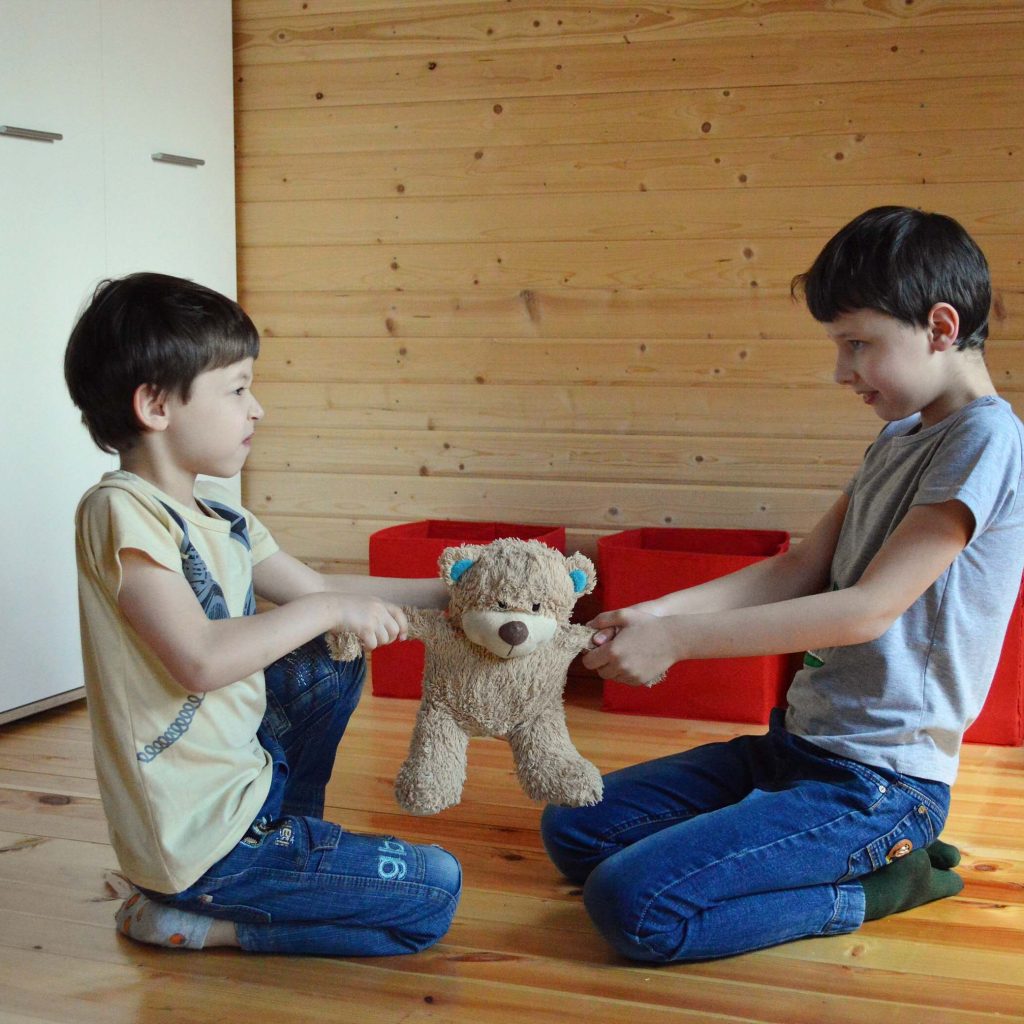Introduction:
When children exhibit innate behavior, it may be difficult for parents, caregivers, and educators to respond appropriately. Defiance, violence, impulsiveness, and disobedience are some examples of behaviors that fall under this category. In addition, it is essential to keep in mind that the wants and feelings that lie behind a child’s conduct are often reflected in that behavior. When dealing with challenging behaviors, it is crucial to have a comprehensive strategy for solving the problem.
One tactic is to try to have a better understanding of the factors that led to the conduct. Here are some of the most common factors that contribute to challenging behaviors in children include traumatic experiences, an absence of structure, and inadequate attention. Parents, other caregivers, and teachers may devise a strategy to address a child’s behavior that is more successful if they have a solid grasp of the factors that contribute to it.
In addition to providing children with positive reinforcement and offering redirection, helpful ways for coping with innate behaviors in children include: Rewarding children for displaying desirable behaviors is an example of positive reinforcement. On the other hand, redirection strategies entail steering youngsters away from inappropriate activities and toward those that are more acceptable. These methods serve to establish constructive patterns of conduct in youngsters and teach them to make more responsible decisions.
One other essential tactic for coping with innate behavior shown by youngsters is to establish clear ground rules and penalties. It is crucial to set clear limits and expectations, as well as to regularly enforce consequences for both good and bad actions. Doing so will help ensure that the boundaries and expectations are met. This contributes to the maintenance of structure and predictability, both of which may be reassuring for youngsters.
The ability to communicate openly is another crucial component of successfully managing challenging behaviors in children. In a setting that is secure and free from criticism, children should be encouraged to share their thoughts, emotions, and viewpoints. It will be easier to develop trust and an understanding between parents, carers, and children if adults listen attentively and try to sympathize with the children’s emotions.
It may be important to seek the assistance of a professional in order to address the underlying problems that may be leading to challenging behaviors in children in some circumstances. This may include getting assistance from a therapist or counselor or working together with teachers, caregivers, and other experts to develop an integrated strategy for dealing with innate behavior.
In conclusion, it is necessary to take a comprehensive approach while dealing with innate behavior shown by youngsters. Important strategies that can help effectively address and manage challenging behaviors in children include gaining an understanding of the underlying causes, employing positive reinforcement and redirection, establishing clear rules and consequences, fostering open communication, and seeking professional assistance when necessary.

Overview:
The article “Strategies for coping with innate behavior in children” discusses the different approaches that adults, including parents, carers, and educators, may use to address and manage challenging behaviors that children show successfully. Defiance, violence, impulsiveness, and disobedience are some behaviors that fall under this category. To assist parents in guiding their children toward the development of healthy behavioral patterns and an overall improvement in their quality of life, this discussion aims to provide actionable and efficient techniques for dealing with the behaviors mentioned above. This can include things like understanding the underlying causes of the behavior, employing techniques such as positive reinforcement and behavior redirection, establishing clear rules and consequences, fostering open communication, and, if necessary, seeking the assistance of a professional.
Understanding the root causes of innate behavior:
To treat and deal with innate behavior in children, it is important to first understand what causes them. Parents, caregivers, and teachers can come up with a more focused and effective plan to deal with bad behavior if they first figure out what’s going on underneath the behavior.
Trauma is a prevalent factor that might contribute to challenging behaviors in children. Children who have been traumatized by experiences such as physical or emotional abuse, neglect, or the loss of a loved one may act out as a means of coping with the feelings they are experiencing as a result of these experiences. It’s important to know a lot about trauma and how it affects people in order to help and intervene in the right way.
A lack of structure and limits is another typical factor that contributes to youngsters exhibiting innate behavior. Children flourish in environments that are consistent and predictable; in the absence of such an environment, they are more likely to experience confusion and frustration, both of which may lead to demanding behaviors.
Children’s challenging behaviors may also have their roots in a lack of attention from their caregivers. Children who are not given sufficient positive attention from their parents or other caregivers may resort to acting out in order to acquire the attention they need. This might surface as problematic behaviors such as disobedience, violence, or refusal to comply with instructions.
Children who act out may have problems with communication, making friends, and self-control, but they may also have developmental or mental health issues. These are some of the other characteristics that might contribute to these innate behaviors.
It’s important to keep in mind that understanding why children behave inappropriately is a time-consuming endeavor that calls for patience, keen observation, and honest conversation. It is important that the strategy be adapted to the specific circumstances of each child, which may include the participation of trained specialists such as therapists or counselors.
To summarize, it is a vital step to successfully address and manage innate behavior in children to have a solid grasp of the underlying factors that contribute to these behaviors. Some of the most common reasons include traumatic experiences, an absence of structure and limits, inadequate attention, and developmental or mental health difficulties. Parents, other caregivers, and teachers may build a more specific and successful strategy to address a child’s problematic behavior if they first identify and then treat the underlying problems.

Positive reinforcement and redirection:
When dealing with challenging behaviors in children, helpful tactics include providing positive reinforcement and redirecting their attention. These tactics put an emphasis on fostering constructive behaviors and diverting less desirable ones into more suitable pursuits in order to achieve their goals.
Children are given rewards as a kind of positive reinforcement when they display actions that are desirable. Praise in the form of words, material prizes, or the opportunity to do something special are all examples of this. For instance, a teacher may praise and reward a kid with a sticker or a small gift when the child is able to sit still for a certain length of time during class. This would be helpful in the event that the child has difficulty remaining seated during the lesson. To make it more likely that the child will do what is wanted in the future, the goal is to have the child form a positive association with it.
Through the use of redirection tactics, undesirable behaviors are redirected to more positive and useful pursuits. This may include modifying the environment so that it is less favorable to children engaging in undesirable behaviors or giving them an alternative activity for them to participate in. For instance, if a kid is having trouble concentrating on their schoolwork, a parent may choose to divert their attention to another activity, such as taking a walk or playing a game. The objective is to divert the child’s attention away from the unfavorable conduct and toward an activity that is more constructive and beneficial.

It is vital to highlight that additional tactics, like establishing clear rules and penalties, encouraging open communication, and comprehending the underlying reasons for the behavior, should be utilized in conjunction with positive reinforcement and redirection. Additionally, it is essential to maintain a consistent approach when using incentives and redirections with the kid and to choose rewards that are suitable for the child’s age, interests, and current level of development.
In a nutshell, coping with challenging behaviors in children successfully may be accomplished via the use of tactics such as positive reinforcement and redirection. Rewarding children for displaying desirable behaviors is an example of positive reinforcement. On the other hand, redirection strategies entail steering youngsters away from inappropriate activities and toward those that are more acceptable. These methods serve to establish constructive patterns of conduct in youngsters and teach them to make more responsible decisions.
Clear rules and consequences:
To successfully manage innate behavior shown by youngsters, it is vital to devise an efficient system consisting of rules and consequences. Establishing clear limits and expectations not only gives a foundation for knowing what constitutes proper conduct but also enables one to communicate the consequences of not adhering to those boundaries and expectations. In addition, maintaining order and stability in a setting by constantly imposing positive and negative consequences helps create an atmosphere in which children may feel safe.
It is vital to consider the kid’s age, degree of maturity, and specific circumstances while formulating the rules and penalties for a child. In addition to considering any underlying concerns contributing to the behavior, the rules and punishments should be appropriate for their age and accurately represent the world around them.
Including children in determining the rules and the penalties for breaking those rules is essential. Permit them to express their thoughts, and make sure you consider them when making decisions on the rules. When this is done, it gives children the opportunity to embrace responsibility and blame for their acts, which has the potential to increase their compliance with the rules.

It is crucial to keep control while implementing consequences. You should also be consistent with your judgments and check to ensure that all penalties are acceptable. Abuse of any kind, whether physical or verbal, should be avoided at all costs since it will not only have a terrible influence on the situation but also has the potential to have a substantial effect on the connection you have with the kid. Removing privileges or the imposition of an apology obligation as a consequence of the individual’s unacceptable conduct is a more practical option.
It is helpful to reward the kid when they adhere to the rules, establishing a feeling of balance and acknowledgment for their excellent conduct. This helps promote positive reinforcement, which is essential for the development of positive reinforcement.
In a nutshell, the establishment of transparent laws and the imposition of natural consequences is an efficient method for coping with the various actions of children. The maintenance of order and regularity may be comforting for children, and this can be accomplished by setting clear boundaries and expectations, as well as by being consistent in the imposition of consequences for both good and bad behaviors. The rules and the consequences should be appropriate for the kid’s age, and believable, and they should engage the youngster throughout the process. Incarnadine punishment or verbal aggressiveness should not be used throughout the impulsion process; instead, it should be carried out in a calm, standardized, and unbiased manner.
Open communication:
When it comes to coping with innate behavior in children, having open communication is an essential component. It may be helpful to foster trust and understanding between parents, caregivers, and children by encouraging children to communicate their ideas and emotions in a setting that is secure and does not pass judgment on what the children have to say.
Open communication may take various forms, including active listening, empathy, and asking questions that don’t have definitive answers or conclusions. Active listening is not just paying attention to what the youngster is saying but also recognizing and validating their emotions without passing judgment. Having empathy means placing oneself in the position of the kid and trying to see things from their point of view. It may be helpful to encourage children to discuss their ideas and emotions by asking them open-ended questions. These inquiries can also be helpful in identifying any underlying problems that may be contributing to the behavior of the kid.
It is also essential that you set an example for open communication via your own actions. Children pick up behaviors by watching others, so if they witness adults interacting freely and honestly, it increases the likelihood that the children will do the same.

It is essential to schedule a specific time for communication, such as frequent family meetings or time spent one-on-one with each kid. This time should be scheduled in advance. This may be helpful in establishing a sense of order and predictability, and it can also make it more likely that children will feel comfortable discussing their ideas and emotions with one another.
In conclusion, maintaining open communication is an essential component in the process of addressing challenging behaviors in children. It may be helpful to foster trust and understanding between parents, caregivers, and children by encouraging children to communicate their ideas and emotions in a setting that is secure and does not pass judgment on what the children have to say. Open communication requires a number of crucial components, including active listening, empathy, and the asking of open-ended questions. In addition to this, it is essential to demonstrate to others the value of open communication via your own actions and to schedule time specifically for communication. This contributes to the formation of a sense of order and regularity and may make it more likely that youngsters will feel comfortable discussing their ideas and emotions with one another.
Seek professional help:
In some circumstances, seeking the assistance of a trained expert is a crucial step in developing effective strategies for coping with challenging behaviors shown by youngsters. It may be important to seek the assistance of a professional when the behavior is being contributed to by underlying problems such as traumatic experiences, developmental abnormalities, or concerns with mental health.
A therapist or counselor is one kind of mental health practitioner who could be useful in the process of managing challenging behaviors shown by children. They are able to work with children to address underlying emotional or psychological difficulties, teach children coping methods and problem-solving skills, and work with children to address underlying emotional or psychological issues. They are also able to collaborate with the child’s parents and other caregivers in order to provide those individuals with the resources and support they need in order to properly manage the behavior at home.
Gift:
Claim our premium worksheet practice book For Free (Only for you) :
Pediatricians and psychiatrists are two more types of medical professionals that could be able to be of assistance. They are able to conduct assessments in order to rule out any underlying medical or psychological disorders that may be contributing to the behavior, and they are able to give appropriate treatment in the event that it is required.
It is also essential to work together with other experts, such as teachers, caretakers, and school counselors, in order to formulate a unified strategy for dealing with the behavior in question. They are able to provide helpful insights and assistance, and they may collaborate to develop a plan that caters to the child’s needs across a variety of environments.
For the purpose of coping with challenging behaviors in children when there are underlying problems such as trauma, developmental disorders, or mental health challenges that are contributing to the behavior, it is vital to seek the assistance of a professional. This may include obtaining assistance from a therapist or counselor, a pediatrician or psychiatrist, or working in collaboration with other experts such as teachers, caregivers, and school counselors. This contributes to the formation of an integrated strategy that meets the requirements of the kid in a variety of environments.

Conclusion:
In conclusion, dealing with innate behaviors in children needs a holistic approach that addresses the underlying causes of the behavior, as well as the utilization of a variety of strategies such as positive reinforcement and redirection, clear rules and consequences, open communication, and seeking professional help when it is necessary.
To treat and deal with innate behavior in children, it is important to first understand what causes them. Some of the most common reasons include traumatic experiences, an absence of structure and limits, inadequate attention, and developmental or mental health difficulties. Parents, caregivers, and educators may build a more specific and successful strategy to address the behavior at hand if they first determine the root causes of the problem and then work to address those causes.
The use of tactics such as positive reinforcement and redirection are also useful ways for coping with challenging behaviors shown by youngsters. Children are rewarded for displaying desirable behaviors, and inappropriate behaviors are redirected to more acceptable activities via the use of these strategies. These methods serve to establish constructive patterns of conduct in youngsters and teach them to make more responsible decisions.
Dealing with challenging behaviors in children requires having a solid plan that includes establishing clear rules and penalties. Structure and predictability may be comfortable for children; therefore, it is important to establish clear limits and expectations and regularly enforce consequences for both good and bad actions. This will assist in preserving structure and predictability.
When it comes to coping with challenging behaviors in children, having open communication is an essential component. It may be helpful to foster trust and understanding between parents, caregivers, and children by encouraging children to communicate their ideas and emotions in a setting that is secure and does not pass judgment on what the children have to say.
It may be important to seek the assistance of a professional in order to address the underlying problems that may be leading to challenging behaviors in children in some circumstances. This may include getting assistance from a therapist or counselor or working together with teachers, caregivers, and other experts to develop an integrated strategy for dealing with innate behavior.
In general, tolerance, understanding, and consistency are required while dealing with innate behavior shown by youngsters. Parents, other caregivers, and educators may assist children in the formation of healthy behavioral patterns and in the enhancement of their overall well-being by adopting a holistic perspective and making use of a range of instructional methods.
Bonus:
For more amazing content, Please check out https://bloggchain.com/spoiled-child-collagen-4-new-tips/
Sponsored By:
Check out the best and most affordable digital marketing services that can take your business to the next level. https://elonmusktrillion.com/



